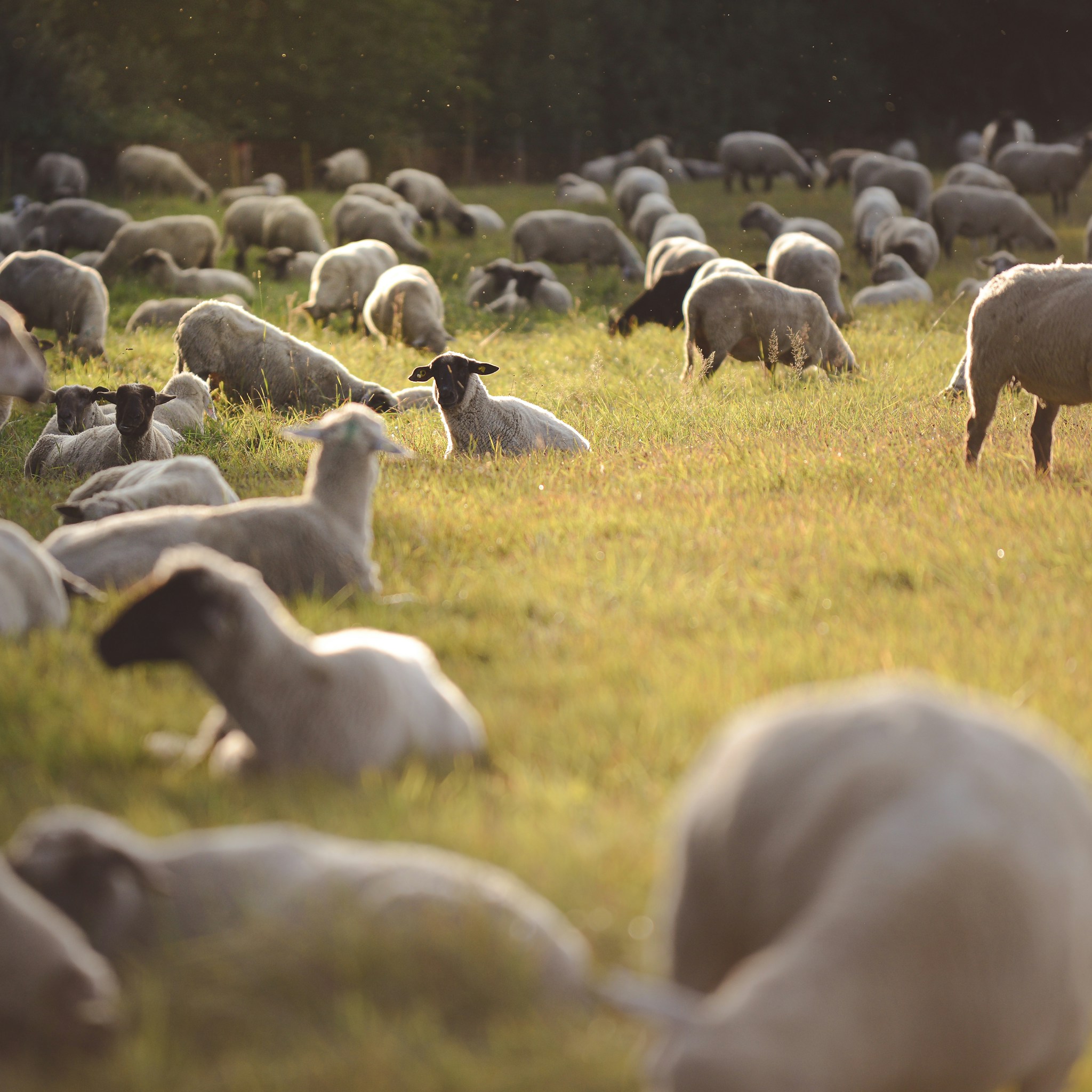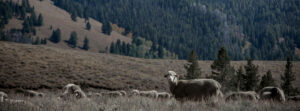Land Stewardship
On the Land: Facts, Practices, & Impact
Rotational Grazing

A method that involves rotating sheep to graze in different areas, allowing plants to regrow, maintaining healthy soil, and improving the land's water retention.
Wildfire Prevention

Targeted sheep grazing reduces wildfire fuel loads by 50–70%, protecting ecosystems and communities.
Windbreaks in Action

Strategically planted windbreaks on grazing lands, reduces wind erosion by 80% and boosts nearby crop yields by 20%. These breaks also provide valuable habitat for wildlife.
Water Infiltration

Regenerative grazing improves water infiltration rates by 68%, helping combat droughts and reducing erosion.
Land Restoration

Over the last 14 years, wool ranchers have reduced ruminant numbers while maintaining land productivity, balancing production with environmental restoration.
Carbon Farming

Practices like those championed by Fibershed’s Climate Beneficial Wool Program sequester 1.5 metric tons of carbon per hectare annually.
Healthy Soils

Grazing sheep promote healthy soils that store carbon, retain water, and reduce runoff, supporting land and marine ecosystems.
Biodiversity Benefits

Regenerative grazing practices result in the proliferation of dozens of plant species, creating thriving habitats for pollinators and wildlife.
Regenerative Agriculture: A Better Future for Our Land
Effective land management is at the heart of wool production, ensuring harmony between agricultural practices and the environment. Wool producers not only care for the sheep they raise but are also steward the lands they manage. Implementing sustainable and regenerative practices can benefit biodiversity, soil health, and carbon sequestration.
A Step Towards a Healthier Planet
Dozens
Regenerative grazing practices result in the proliferation of dozens of plant species, creating thriving habitats for pollinators and wildlife.
+3,000 lbs
Wool production helps sequester more than 3,000 lbs of carbon per hectare annually, reducing the industry’s carbon footprint.
+15- 25%
Regenerative grazing improves soil organic carbon by 15-25% over 5-10 years, enhancing fertility and water retention.

+65%
Healthy soils can reduce runoff by more than 65%, significantly decreasing sedimentation and safeguarding rivers, lakes, and marine ecosystems.
2x
Sheep grazing in forest plantations can double the amount of healthy trees and increase each tree's growth by 30% compared with areas not grazed.

Ranchers are stewards of the land, balancing production with conservation. Every decision we make supports future generations." Ryan Mahoney, Wool Producer

Explore How Ranchers Enhance Ecosystems and Protect Natural Resources
Discover the Full Impact of Wool
Natural, Sustainable, American-Grown
Learn More





